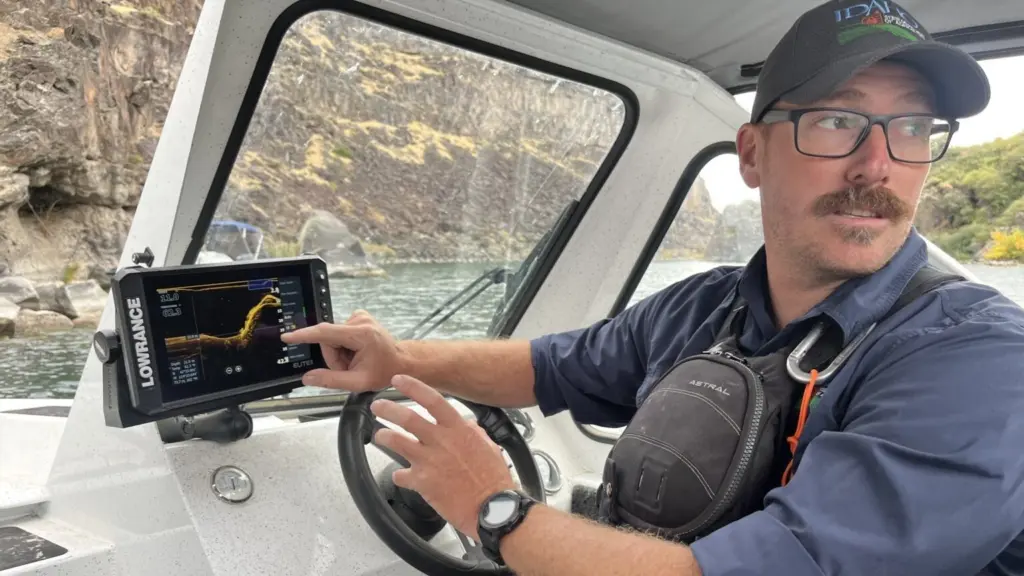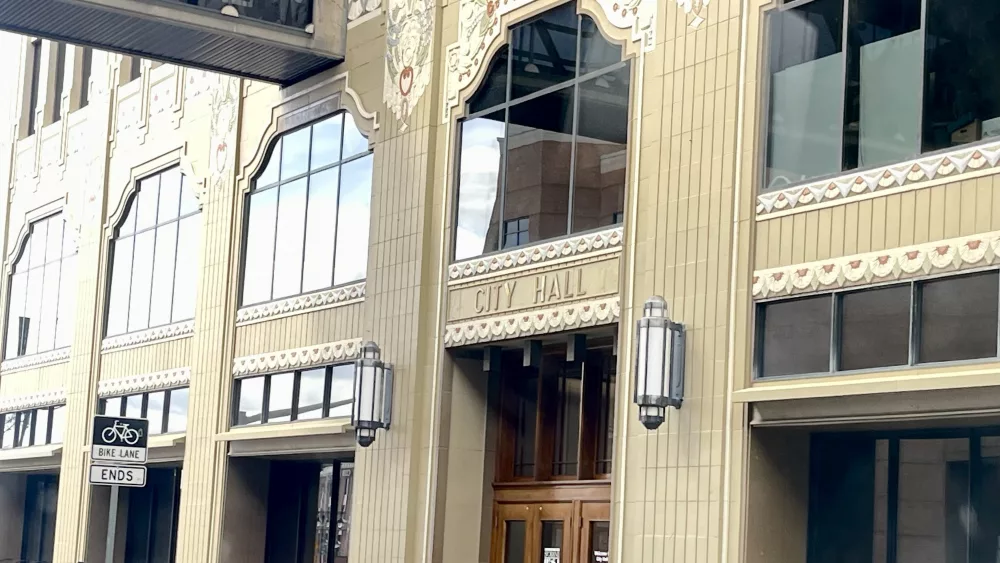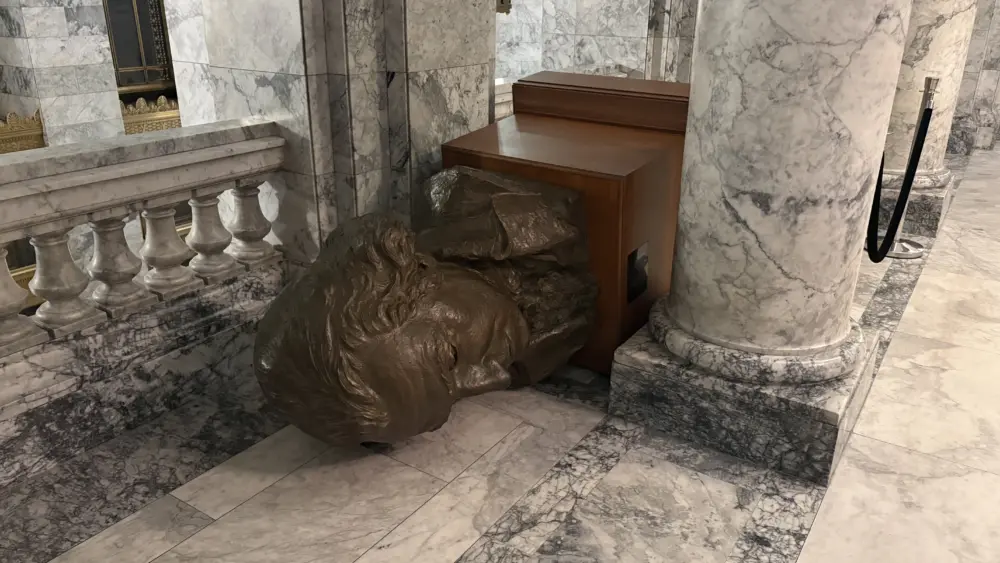TWIN FALLS, ID – Now in its third year, the effort to rid Idaho’s Snake River of invasive quagga mussels is a near 24/7 operation taking place both on the water and in nearby community college laboratories.
Since Sept. 30, a team of about 25 Idaho State Department of Agriculture staff members and another 15-20 contractors have been applying a copper-based chemical called Natrix to every nook and cranny of a 3.5-mile section of the Snake River, as well as injecting the chemical into some of the underwater pools of the Snake River.
Not only is the Snake River the longest river in Idaho and a source of irrigation and drinking water, but it is also a major tributary of the Columbia River, which empties into the Pacific Ocean.
State officials’ goals are to stop the mussels from spreading beyond the infested area into other parts of the river system and to completely eradicate all of the mussels that have been detected here so far.
“We’re throwing everything at it as if this is the last time we would ever have to, want to or be able to do a treatment,” Idaho State Department of Agriculture Deputy Director Lloyd Knight said.
Quagga mussels were first discovered in Idaho in 2023
Quagga mussels are a nonnative, invasive species that was first detected in water samples taken from the Snake River near Twin Falls in September 2023.
Officials again identified quagga mussels in some of the same parts of the river in 2024 and again this September, although officials said the area of the Snake River infested with mussels has decreased from 7.2 miles of river in 2024 down to 3.5 miles of river this year.
Idaho State Department of Agriculture officials said one breeding pair of adult quagga mussels can produce more than 1 million offspring in one year – reproducing so fast they threaten irrigation, drinking water, agriculture and recreation. Infestations of quagga mussels can clog pipes used for irrigation or drinking water and damage dams or boats, officials said.
Additionally, quagga mussels are filter feeders, and they can disrupt the food web by taking up a huge chunk of the food and nutrients that native species are competing for, officials said.
“That’s why it’s important we throw everything we can at trying to eradicate these things,” Knight said.
Knight estimated this year’s treatment plan could cost $2.5 to $3 million.
But Idaho State Department of Agriculture Director Chanel Tewalt said the department is not asking for any additional state general fund money to fight the mussels at this time. Between $6.6 million that state legislators approved to fight quagga mussels in 2024 to funding taken from the sale of invasive species stickers, Tewalt said the department is not seeking additional general fund money.
What does Idaho’s plan to kill the quagga mussels look like?
The infestation of quagga mussels appears to be limited to the stretch of the Snake River right around Shoshone Falls, a large scenic waterfall that is higher than Niagara Falls.
On Friday, the Idaho State Department of Agriculture invited the Idaho Capital Sun and other reporters from around Idaho to observe the treatment program and tour the infested portion of the Snake River by boat.
In an effort to completely kill all of the quagga mussels, contractors are applying a copper-based chemical called Natrix in concentrations of one part per million to the Snake River.
The copper is designed to flow over the quagga mussels’ gills, suffocating and killing the mussels, Knight said.
The copper chemical also suffocates and kills fish and other aquatic life with gills, officials said, though some species of fish and aquatic life appear resistant to the copper.
Officials said they have seen fish killed this year by the copper treatment, but not as many as were killed during the first year of treatment in 2023, when tons of fish died and floated to the surface of the Snake River.
“There is some additional take that occurs on other organisms (besides the mussels that are targeted), but the nice thing about this river run environment is there’s a good, healthy populations (of aquatic life) up river from where our treatment area is and we expect rehabilitation to occur (after treatment ends),” said Jeremey Varley, southern chief treatment engineer for the Idaho State Department of Agriculture.
This year, crews are using some tools and equipment that has been commonly used in irrigation systems in an attempt to apply the copper chemical to hard-to-reach parts of the Snake River.
Gravity boxes attached to canyon walls above shore help mix river water with the copper chemical near the surface of the water.
And new this year, Varley, who is a certified scuba diver, rigged a new system that uses buoys, a diaphragm pump and a manifold to pump the copper chemical into pools of water 20 feet below the surface of the river to target mussels below the water.
To connect and rig the system, Varley donned a full wet suit and dove down under water, where the visibility was less than 5 feet and water temperatures were a chilly 62 degrees.
“That’s something that Jeremey came up with,” Knight said. “It’s something that is very unique to here. Nobody else has tried it anywhere else.”
Knight said the Natrix treatment being applied to the Snake River is the largest treatment of its kind in the United States and has never been attempted at such a large scale anywhere else in the U.S.
Latest water samples show copper chemical is killing quagga mussels
Meanwhile, as contractors are applying the copper chemical, crews are also collecting water samples in the same stretch of the Snake River. The samples are stored on ice and analyzed in a lab located at College of Southern Idaho in Twin Falls.
On Friday, Michelle Jakaitis, the principle microbiologist for the bacteriology and parasitology lab at the state’s animal health lab, said she had not seen any live quagga mussels in water samples since the treatment program began Tuesday.
“Since treatment has occurred, we have seen much fewer (quagga mussel) veligers, and all of them have been dead, which is exactly what we expect, and we’re very glad,” Jakaitis said Friday.
During the treatment program Jakaitis and the team at the lab are using microscopes to analyze water samples from 10 a.m. until 8:30 p.m. each day.
“It is quite a time commitment, but it is very important, and it has been very useful and informing (us) that the treatment is doing exactly what we’re expecting it to do,” Jakaitis said.
It may be too early to tell if the treatment was totally effective.
Following previous years’ rounds of treatment, crews did not detect the quagga mussels in samples taken earlier this year and during the early summer months of 2024.
But officials did detected the mussels again in early September in 2024 and 2025
Knight said the department’s crews will continue sampling and testing the water for five more years to continue to monitor for the invasive mussels.
Although all Idaho state departments and agencies other than public schools are having to implement budget holdbacks of 3% to cover for state revenues shortfalls, Knight said the Idaho State Department of Agriculture officials decided to prioritize the quagga mussels response and are cutting other areas instead.
“No, this is obviously a priority that we are throwing everybody and everything at,” Knight said.
This story first appeared on Idaho Capital Sun.





